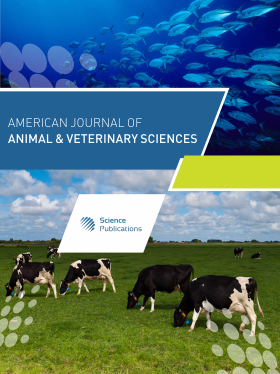Effect of Cassava (Manihot esculenta) Foliage Supplementation to Calves on the Viability and Egg Count of Haemonchus contortus Nematodes
- 1 Instituto Nacional de Investigaciones Forestales, Mexico
- 2 Universidad Popular de la Chontalpa, Mexico
- 3 Centro Nacional de Investigación en Parasitología Veterinaria-INIFAP, Mexico
- 4 Universidad Nacional Autónoma de México (UNAM), Mexico
- 5 Laboratorio de Rumiología y Metabolismo Nutricional (RuMeN), Mexico
Abstract
Thirty early-weaned 5±3 month-old calves with an average body weight of 96±23 kg were used; 24 were artificially infested with 90 larvae (L3), of H. contortus per kilogram body weight. Calves grazed on African Star Grass (Cynodon plectostachyus) from 0600 to 1300 hours. Grazing was supplemented with lucerne hay (Medicago sativa) or cassava foliage (Manihot esculenta), and 500 g-1 head-1 day-1 of a commercial feed containing 16% crude protein and trace-mineralized salt, offered during the time spent in confinement. Five treatments were compared: (1) infested, supplemented with lucerne; (2) as treatment (1), drenched; (3) infested, supplemented with cassava; (4) as treatment (3), drenched; (5) non-infested, supplemented with cassava. Each treatment had three replicates of two calves. Those that were drenched orally received 7 mg kg-1 albendazole on day 21 after being infested. The experiment lasted until 35 days after infestation. The response criteria were number of nematodes in the abomasum and egg count per gram of feces, both taken at weekly intervals. Numerical data were analysed as a completely randomized design, including the effect of sampling week for egg counts and feed intake. The average number of nematodes found in the abomasums did not differ between treatments (P<0.05), the observed values being from 200 to 496 H. contortus. Regarding the egg count in feces, the highest figure (822 g-1) was observed in the undrenched control treatment and the lowest (115 g-1) in the cassava-albendazole treatment. In general, there was a 50-85% reduction in egg counts when cassava foliage was used; the response seemingly being improved when the nematicide was administered. Dry matter intake was lower (P<0.05) for the cassava treatments. In conclusion, cassava foliage could be used for controlling and reducing the infestation of cattle by H. contortus.
DOI: https://doi.org/10.3844/ajavsp.2007.93.98

- 5,314 Views
- 5,457 Downloads
- 3 Citations
Download
Keywords
- calves
- Manihot esculenta foliage
- Haemonchus contortus eggs
